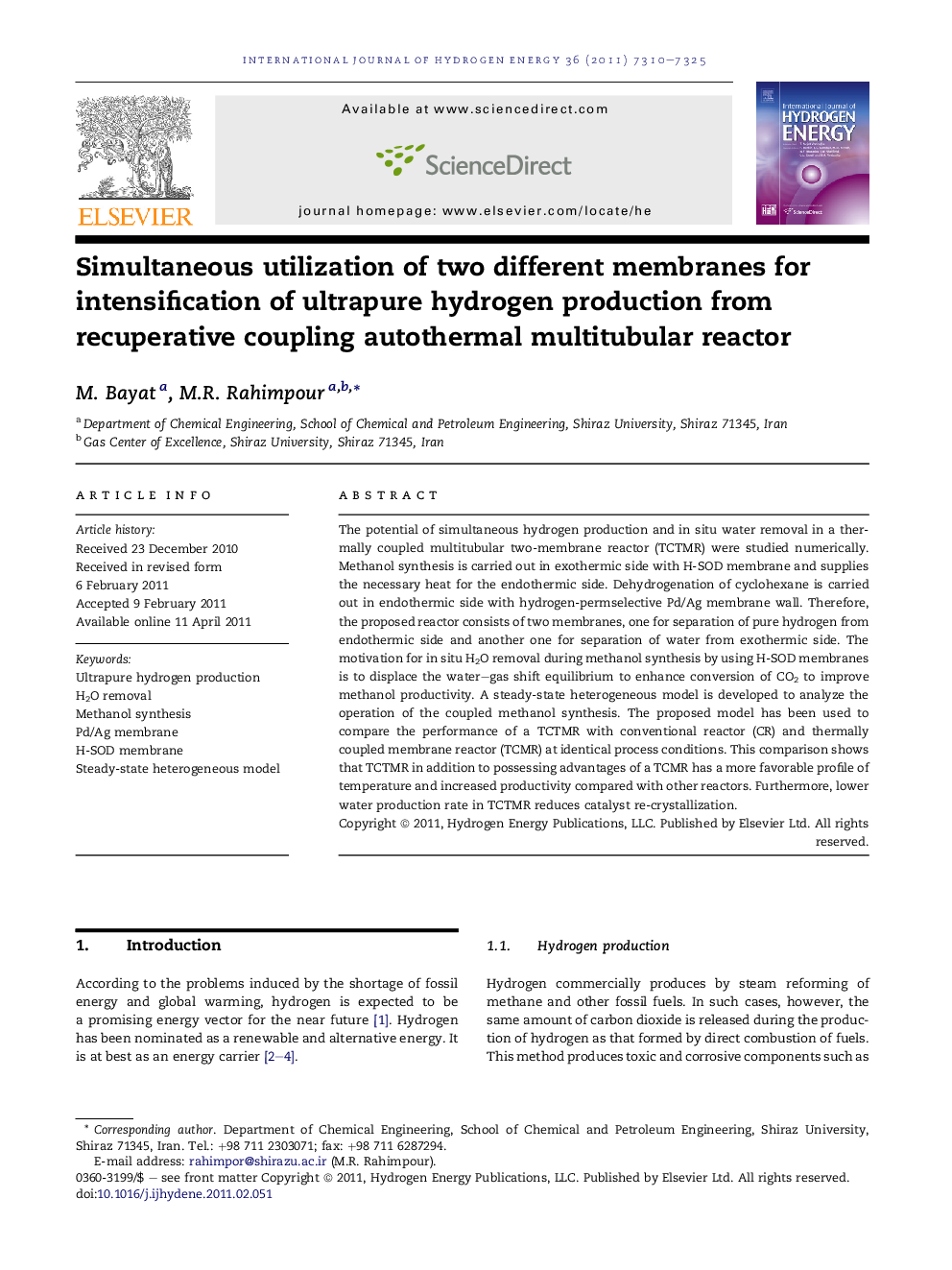| Article ID | Journal | Published Year | Pages | File Type |
|---|---|---|---|---|
| 1272122 | International Journal of Hydrogen Energy | 2011 | 16 Pages |
The potential of simultaneous hydrogen production and in situ water removal in a thermally coupled multitubular two-membrane reactor (TCTMR) were studied numerically. Methanol synthesis is carried out in exothermic side with H-SOD membrane and supplies the necessary heat for the endothermic side. Dehydrogenation of cyclohexane is carried out in endothermic side with hydrogen-permselective Pd/Ag membrane wall. Therefore, the proposed reactor consists of two membranes, one for separation of pure hydrogen from endothermic side and another one for separation of water from exothermic side. The motivation for in situ H2O removal during methanol synthesis by using H-SOD membranes is to displace the water–gas shift equilibrium to enhance conversion of CO2 to improve methanol productivity. A steady-state heterogeneous model is developed to analyze the operation of the coupled methanol synthesis. The proposed model has been used to compare the performance of a TCTMR with conventional reactor (CR) and thermally coupled membrane reactor (TCMR) at identical process conditions. This comparison shows that TCTMR in addition to possessing advantages of a TCMR has a more favorable profile of temperature and increased productivity compared with other reactors. Furthermore, lower water production rate in TCTMR reduces catalyst re-crystallization.
